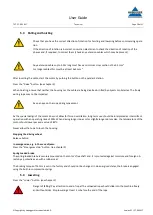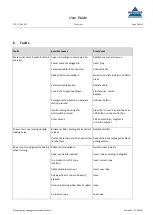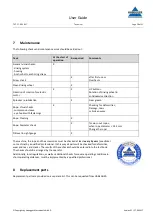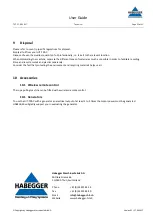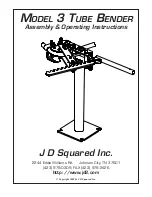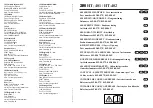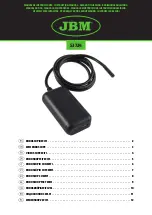
User Guide
TGT. 27.09.2017
Technical
Page 10 of 21
©Copyright by Habegger Maschinenfabrik AG
Version 01 / 27.09.2017
3.3
General safety instructions
Location
-
Always ensure that the device is in a fixed and secure location during operation.
-
Always stand outside the danger zone of the load to be moved and never within range of the exiting cable.
-
Use a motorised winch for longer cables (longer than approx. 50m).
-
You require enough space in which to move. You should therefore ensure that you have a large enough plat-
form.
-
Do not use a ladder as a platform.
-
If you do not have a suitable platform, deploy pulleys and choose a better location.
-
When setting up the machine please ensure that no external hazards can exert influence on the rope pull-
ing machine, the traction rope, the load or the operating personnel during operation. (e.g. falling objects,
passing vehicles, overhead power lines, etc.)
Anchorage
The anchorage point must be able to withstand the expected tensile force (possibly test beforehand).
The best anchorage points are:
-
fixed objects and structures
-
rings which have been cemented in place
-
Eyelets or poles
Natural anchorage points:
-
strong/heavy boulders
-
Trees
-
other suitable objects
Technical anchorage points:
-
Habegger field anchor with piles
-
Rock bolt, concrete anchor
-
Round timber anchor in the ground
-
These anchors are highly dependent on soil conditions.
Secure the machine to the anchoring bolts with sufficiently strong straps or loops.
-
The machine must be able to freely position itself in the direction in which the rope is moving. Danger of
housing breaking!
Do not use any damaged ropes or connecting loops.
Rope couplings and safety devices should not be able to detach themselves in the event of a rope being loose.
-
If the machine is being used in one location for an extended period of time, check the anchors regularly!


















